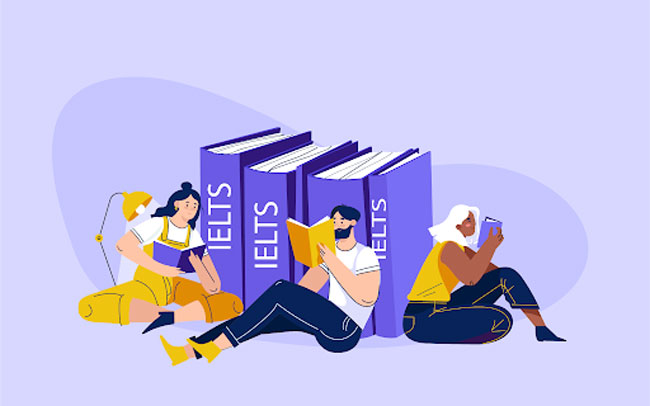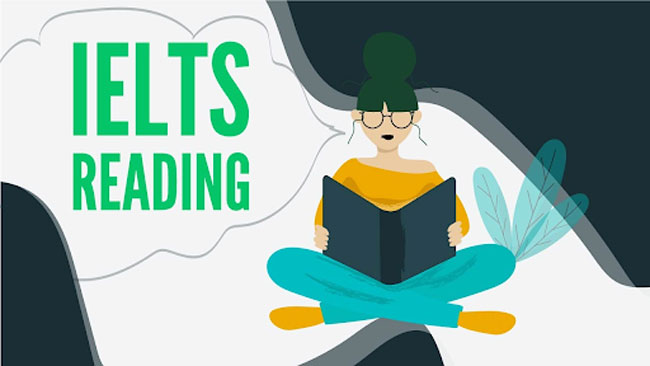Master the IELTS Reading Test: Ultimate Guide & Expert Tips
The IELTS Reading test is often considered a race against time. With 60 minutes to answer 40 questions across three long passages, it challenges not just your comprehension but your speed and strategy.
At IELTS-Testpro, we have analyzed thousands of test results to bring you this comprehensive guide. Whether you are taking the Academic or General Training module, understanding the mechanics of the test is the first step toward a Band 7.0+.
1. IELTS Reading Test Overview
Before diving into specific techniques, it is essential to understand the blueprint of the exam. Knowing the distinct structure of your module (Academic or General Training) and how scores are calculated will help you tailor your study plan effectively.
1. Format
In both IELTS Reading Academic and General Training, the Reading test comprises three passages with a total of 40 questions. You will have 60 minutes to complete the test. There are various types of questions in the IELTS reading examination such as Multiple Choice, True/ False/ Not given, Yes/ No/ Not given, Matching Heading, Matching Information, Sentence Completion, Short Answer question, Note/ Table/ Diagram/ Summary Completion, etc.
Although the time, question kinds and number of questions given for the reading test in IELTS Academic and General Training remain the same, it has several differences.

While the timing and question types are identical, the content differs significantly:
| Feature | Academic Reading | General Training Reading |
|---|---|---|
| Content Source | Books, journals, magazines, and newspapers. | Notices, advertisements, company handbooks, official documents. |
| Topic Nature | Academic topics (Science, History, Sociology). | Daily life, work-related issues, general interest. |
| Structure | 3 long, complex passages. Difficulty increases from Passage 1 to 3. | Section 1: 2-3 short texts (Daily life).
Section 2: 2 texts (Work).
Section 3: 1 long text (General interest). |
>>>Practice now: IELTS Reading Practice Test
2. Grading scores
The marking criteria differ slightly between the two versions. Because the General Training texts are generally simpler/shorter, you need to answer more questions correctly to achieve the same band score compared to the Academic test. Refer to the tables below to set your target:
– Academic Grading scores – Reading
| Correct answer | Band scores |
| 40-39 | 9 |
| 38-37 | 8.5 |
| 36-35 | 8 |
| 34-33 | 7.5 |
| 32-30 | 7 |
| 29-27 | 6.5 |
| 26-23 | 6 |
| 22-19 | 5.5 |
| 18-15 | 5 |
| 14-13 | 4.5 |
| 12-10 | 4 |
| 9-8 | 3.5 |
| 7-6 | 3 |
| 5-4 | 2.5 |
– General Training Grading scores – Reading
| Correct answer | Band scores |
| 40 | 9 |
| 39 | 8.5 |
| 38-37 | 8 |
| 36 | 7.5 |
| 34-35 | 7 |
| 32-33 | 6.5 |
| 30-31 | 6 |
| 27-29 | 5.5 |
| 23-26 | 5 |
| 19-22 | 4.5 |
| 15-18 | 4 |
| 12-14 | 3.5 |
| 9-11 | 3 |
| 6-8 | 2.5 |
II. Common Mistakes in the IELTS Reading Test
Even advanced English users lose marks due to simple errors. Avoiding these common pitfalls is the fastest way to protect your score. Here are the top mistakes IELTS-Testpro experts want you to verify:
1. Copying the answer incorrectly
Some candidates may fail to copy the word exactly as it is in the passage when transferring answers. Also, candidates are permitted to write in capitals and lower case but you will lose marks if you don’t capitalize the first letter of a proper noun such as the United States.

2. Not leaving time to transfer your answers to the answer sheet
In the IELTS Reading test, there is no extra time for you to transfer your answers to the answer sheet. So, make sure that you get them all down within 60 minutes.
3. Leaving a blank
If you don’t know the answers for any questions, don’t leave blank, make an educated guess. Leaving blank means you will not have any chance to answer questions correctly.
4. Reading the passage entirely
Reading the whole passage is a mistaken approach to lose the important time. It’s advisable for test-takers to start answering questions as soon as possible after getting the main idea. You should not waste time understanding the meanings of words that are unimportant.
5. Answering questions without reading passages
It would be a great mistake if you get a familiar topic and start answering the questions based on your knowledge and personal experience. You need to answer the questions by reading the information given in the texts.
III. Top Strategies to Conquer the IELTS Reading Test
The IELTS Reading test is one of the most challenging parts to many candidates as they need to answer many questions in various kinds in a short amount of time. Hence, to gain a high score in this test, you can follow the following tips:

1. Read as much as possible
Develop a habit of reading in your spare time! Reading not only helps you to improve your English skills but also boost your vocabulary. You can read anything that you feel interested in, ranging from blogs, journals, newspapers, magazines to textbooks.
2. Read the instructions carefully
Even good IELTS candidates fail to answer the easy questions correctly as they don’t follow the instructions carefully. For instance, in the Reading test, the instructions read “Write two words and/ or a number”, then candidates must understand that this could mean “One word/ One word and a number/ Two words/ Two words and a number”.
If the instructions state “Two words only” and the answer is tables and chairs, you need to write “tables, chairs” instead of “tables and chairs”. Tables, chairs are two words, while tables and chairs are three, therefore, you will get wrong.
3. Skimming
Skimming is one of the key techniques to get a high score in the IELTS Reading test. It means reading a text quickly to know what the general idea behind the passage is. You can skip unimportant words like prepositions or ignore the difficult words that you don’t have to understand.
4. Scanning
You must learn to scan. Scanning means searching a text for a particular word or term, for example, a name or a date. You can scan either left to right or right to left, from top to bottom or bottom to top.
5. Don’t panic
The IELTS Reading test contains both questions from easy to extremely difficult. Bear in mind that don’t panic when trying to answer a difficult one. Besides, don’t spend too much time on a question and fail to spend enough time on the rest of the questions. You can mark the difficult questions and come back later. For words you don’t understand, try to guess their meaning based on the context.
6. Time management
Many IELTS candidates said that they run out of time in the third reading passage. You should take about 20 minutes for each passage including 16-17 minutes for reading and answering the questions and 3-4 minutes for transferring and checking your answers.
To practice and learn more tips in the IELTS Reading skill, download the IELTS TEST PRO right now!